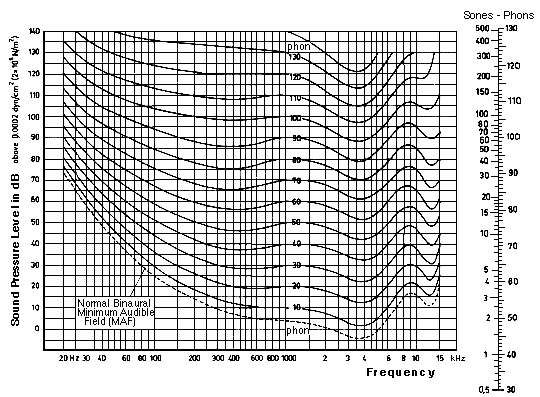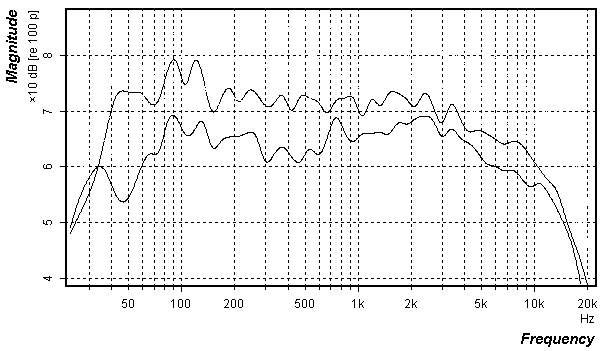| Harmonic Balancing |
|
Har-Bal™ new thinking, new directions... IntroductionOften todays songs can be recorded and mastered incorrectly, producing extremely irritable tones for the listener. Prolonged periods of listening to such recordings can lead to hearing fatigue that ultimately takes the pleasure out of the listening experience. Harmonic Balancing provides a reliable means of correcting for and removing the tonal imbalances inherent in any song, producing a more agreeable sound to the listener. This new process has demonstrated itself time after time in producing a harmonically balanced sound from one that was wanting. When a song is Harmonically Balanced the effect can be phenomenal. Have you ever been in a club and found yourselves having to literally scream to talk to someone sitting right next to you? Yet other times the music can be just as loud, and you never have to strain to speak. When the tones and energies are off in a song you become tired just from speaking and then ultimately irritable. Most of the time we are unaware of the cause but Har-Bal gives you the ability to see it and take steps to correct for it. Harmonic Balancing simply brings out more of what the artist was initially trying to accomplish without changing the overall song : that which the process of mastering strives for. Many artists have great songs but because of deficiencies in their recordings the music is placed aside. With Har-Bal you will be able to quickly add the professional touch to your recordings, making the best possible sonic impression. So why is Harmonic Balancing better than conventional approaches?To answer this question let's reflect upon and define conventional approaches. Current practice for mastering of popular music will typically involve a combination of processes including mix-down, dynamic range compression, equalization and normalization. Harmonic balancing principally addresses the issue of equalization. After the mix-down the final mix will more often than not have some level of dynamic range compression applied to it, either through a conventional compressor or a multi-band compressor. After compression some degree of equalization may be needed to compensate for the shift in spectral balance that compression often causes, or worse still, to compensate for a poor mix-down. Either way, this is achieved by a studio engineer of varying skill adjusting the controls on a graphic, or more commonly a parametric, equalizer while monitoring the resultant sound through speakers to obtain the desired effect. The whole process is heavily reliant upon the skills of the engineer. In particular, the degree to which he or she can judge the music and its deficiencies, or in other words, how well he or she can analyze the recording through listening. Even for the most proficient of operators this task can be particularly difficult to do well and this in turn is a result of the way in which we perceive sound. Factors such as masking, poor monitoring acoustics, and poor speakers play a significant part but most importantly the issue of human loudness perception makes the task very difficult to do well. Human hearing is volume dependent. At low volumes we find it hard to hear low and high frequencies but as the volume increases the spectrum extremes become progressively easier to hear as is illustrated in the equal loudness contours for human hearing shown in Figure 1. So much so that you might find that if you were to simply turn up the volume you may find that your mix sounds significantly better. So when you combine the effect of loudness sensitivity and equalization changes, how do you tell how much of the improvement was due to the equalization and how much was due to the overall increase in perceived loudness? For example, you might raise the mid-range by 6dB because it sounds better but do you know if this improvement is actually due to the equalization or just merely the fact that the effective loudness has increased by something less than 6dB? To accurately judge a process that involves changes in spectral balance requires that you account for the change in effective loudness. In the above example, to accurately judge the effect of the EQ change would require that you reduce the overall volume whilst boosting the mid-range but by how much? This is probably the most significant reason for conventional mastering approaches not performing as well as they might.
Figure 1: Equal loudness contours for human hearing subject to pure tones using in a free-field with the subject facing the source (from ISO recommendation R226).So how does harmonic balancing handle this problem? Our harmonic balancing software is essentially composed of two parts : a spectrum analysis engine and a high-resolution digital filter (linear or minimum phase realisation). We handle the problem by first analyzing the entire recording. This gives us a measure of the average and peak spectrum content (displayed graphically) from which we can quickly and easily judge the spectral balance of a given recording. Then through a novel user interface, our software allows you to design a matching digital filter that produces the spectral balance that you want and without question. The designed filter can tested by listening to the effect it has on the recording and comparing it with the un-balanced version in real time. Now how is this different from the conventional approach? Firstly, you do not need golden ears to judge where the problem areas of a particular recording lie as the spectrum measurement gives you an accurate indication of this. If you find this hard to believe try this for a challenge. Find what you believe to be your best sounding CD and your worst sounding CD and analyze each in turn. You will find the differences obvious. Figure 2 is a illustrative case in point of two recordings in the same genre but with vastly differing listenability. Can you see why? With experience you will come to a better understanding of the relationship between a particular spectral shape and the overall sound quality.
Figure 2: Measured spectrums for a poorly mastered track overlayed on a good one, as measured by Har-Bal. The poor recording sounds thin and harse. Can you guess which one is which?Secondly, a typical equalization filter will have only a limited degree of flexibility (i.e. limited boost & cut, Q etc.) and selectivity. Har-Bal, on the other hand, uses an 8192 point FIR filter whose characteristics are designed to match and compensate for the average spectrum as closely as possible. And finally, following on from the discussion of loudness, harmonic balancing attempts to compensate for the effect of changing apparent loudness that results from filtering. Har-Bal does so by measuring a loudness figure for the original recording (based upon the Zwicker loudness model which is a standardised approach found in the DIN 45631 / ISO 532B standards) and adjusting the volume control on the filtered version so that the loudness figure of merit after filtering is the same as for the original. In this way you can be sure that the differences you hear are due to the change in spectral balance and not the change in volume. A simplified view of the processes which Har-Bal utilises in performing Harmonic Balancing is shown in Figure 3. Notably missing from this view is the process of loudness compensation, which has been overlooked for the sake of clarity.
Figure 3: Schematic representation of the functioning of Har-Bal.ConclusionsBy coupling spectrum analysis with high resolution digital filtering Har-Bal provides a powerful, yet functionally simple means of re-adjusting the spectral balance of sound recordings, be they original new masterings or re-masterings of existing works. |




